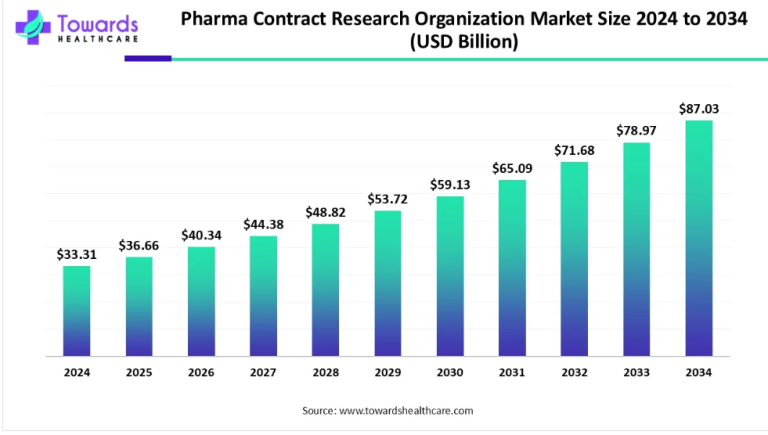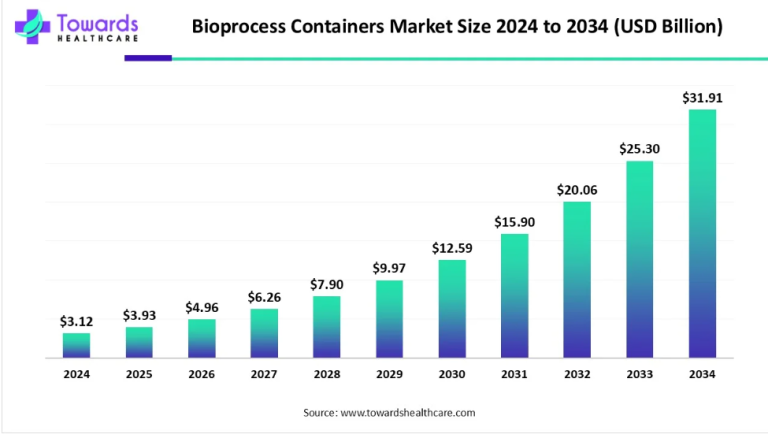
The fibromyalgia treatment market has witnessed a steady ascent in recent years, with projections indicating a promising future ahead. According to recent estimations, the market size is poised to experience substantial growth, transitioning from USD 2.77 billion in 2023 to approximately USD 4.13 billion by 2032. This impressive expansion is anticipated to unfold at a Compound Annual Growth Rate (CAGR) of 4.3% between 2024 and 2032. Such remarkable figures not only underscore the significance of addressing fibromyalgia but also hint at the evolving landscape of treatment modalities and healthcare interventions tailored for this condition.
Understanding Fibromyalgia: A Complex Puzzle
Before delving into the nuances of the fibromyalgia treatment market, it is imperative to grasp the intricacies of the condition itself. Fibromyalgia is a chronic disorder characterized by widespread musculoskeletal pain, often accompanied by fatigue, sleep disturbances, and cognitive impairments. Despite its prevalence, fibromyalgia remains poorly understood, with its etiology multifactorial and its diagnosis challenging. However, advancements in research have shed light on potential underlying mechanisms, paving the way for innovative therapeutic approaches and management strategies.
Driving Forces Behind Market Growth
Several factors contribute to the projected growth of the fibromyalgia treatment market. One significant driver is the increasing awareness and recognition of fibromyalgia as a legitimate medical condition, leading to greater diagnosis rates and subsequent demand for effective treatments. Additionally, advancements in medical technology and pharmaceutical research have facilitated the development of novel drugs and therapies targeting the complex symptomatology of fibromyalgia. Furthermore, the growing prevalence of lifestyle-related risk factors, such as sedentary behavior and psychological stress, has underscored the need for comprehensive and personalized treatment regimens, thereby fueling market expansion.
Evolving Treatment Landscape: From Conventional to Cutting-edge
The fibromyalgia treatment market encompasses a diverse array of interventions, ranging from conventional pharmacotherapy to complementary and alternative medicine (CAM) modalities. Traditional approaches often involve the use of analgesics, antidepressants, and antiepileptic drugs to alleviate pain and improve symptom management. However, with increasing emphasis on holistic healthcare and patient-centered outcomes, there has been a burgeoning interest in non-pharmacological interventions, including cognitive-behavioral therapy (CBT), physical therapy, and mindfulness-based practices. Moreover, the emergence of innovative treatments, such as transcranial magnetic stimulation (TMS) and non-invasive neuromodulation techniques, heralds a new era of precision medicine tailored to the individual needs of fibromyalgia patients.
Market Dynamics: Navigating Challenges and Opportunities
Despite the optimistic outlook for the fibromyalgia treatment market, several challenges and opportunities lie ahead. Regulatory hurdles and reimbursement issues pose significant barriers to market entry and product adoption, particularly for novel therapeutics and medical devices. Moreover, the heterogeneity of fibromyalgia presentations complicates clinical trial design and outcome measurement, underscoring the need for standardized diagnostic criteria and patient-reported outcome measures (PROMs). Nevertheless, ongoing research initiatives and collaborative efforts within the healthcare community offer promise for overcoming these obstacles and driving innovation in fibromyalgia care.
Future Perspectives: Charting a Course for Progress
Looking ahead, the fibromyalgia treatment market is poised for continued growth and evolution, driven by advancements in scientific understanding, technological innovation, and patient-centered care. As researchers unravel the complex pathophysiology of fibromyalgia and clinicians refine personalized treatment algorithms, the landscape of fibromyalgia management will undoubtedly undergo transformative changes. Moreover, increased public awareness and advocacy efforts are crucial for reducing stigma, fostering empathy, and promoting equitable access to care for individuals living with fibromyalgia. By harnessing the collective expertise and compassion of healthcare stakeholders, we can forge a path towards improved outcomes and enhanced quality of life for fibromyalgia patients worldwide.
Fibromyalgia, a chronic condition characterized by widespread musculoskeletal pain, fatigue, and cognitive difficulties, affects millions of adults worldwide. Despite its prevalence, the exact cause of fibromyalgia remains elusive, presenting a challenge for effective treatment. However, as demand for solutions escalates, the medical community is actively exploring innovative approaches to alleviate symptoms and improve the quality of life for individuals living with this condition.
Understanding Fibromyalgia: A Complex Syndrome
Fibromyalgia presents a complex clinical picture, with patients experiencing chronic pain, fatigue, sleep disturbances, and cognitive impairments. While the underlying mechanisms are not fully understood, current research suggests that fibromyalgia may be linked to central sensitization syndrome, a condition where the nervous system becomes hypersensitive to pain signals.
Demographic Insights
Fibromyalgia predominantly affects women, with approximately 7.7% experiencing the condition compared to 4.9% of men in the United States. Moreover, studies conducted in Europe and South America have reported prevalence rates ranging from 3.3% to 8.3%, indicating a global impact. Notably, fibromyalgia tends to increase with age, with individuals between 20 to 55 years old most commonly affected.
Treatment Landscape: Beyond Traditional Medications
Traditionally, fibromyalgia management has relied on pharmacological interventions, including antidepressants, anticonvulsants, and pain relievers. While these medications can provide symptomatic relief for some patients, they may not address the underlying mechanisms driving fibromyalgia. As a result, researchers are exploring alternative treatment modalities to complement existing pharmacotherapy options.
Emerging Therapeutic Strategies
In recent years, there has been growing interest in non-pharmacological approaches to fibromyalgia management. Techniques such as cognitive-behavioral therapy (CBT), exercise therapy, acupuncture, and mindfulness-based interventions have shown promise in improving pain perception, sleep quality, and overall functioning in individuals with fibromyalgia.
Cognitive-Behavioral Therapy (CBT)
CBT aims to modify maladaptive thoughts and behaviors associated with chronic pain, empowering patients to develop coping strategies and enhance their resilience. By addressing the psychological aspects of fibromyalgia, CBT can help individuals better manage their symptoms and improve their overall quality of life.
Exercise Therapy
Regular physical activity, tailored to individual capabilities, has been shown to alleviate pain and fatigue in fibromyalgia patients. Low-impact exercises such as walking, swimming, and yoga can improve muscle strength, flexibility, and mood, contributing to overall well-being.
Complementary and Alternative Medicine (CAM)
Complementary therapies such as acupuncture, massage therapy, and herbal supplements are gaining recognition as adjunctive treatments for fibromyalgia. While the evidence supporting their efficacy is still evolving, many patients report subjective benefits, highlighting the importance of personalized care.
Leveraging Technology for Patient Empowerment
In the digital age, technology has become an invaluable tool for managing chronic conditions like fibromyalgia. Mobile applications, wearable devices, and telemedicine platforms offer new avenues for patients to track their symptoms, communicate with healthcare providers, and access educational resources remotely.
Mobile Applications
Several smartphone applications are available to help individuals with fibromyalgia monitor their symptoms, track medication adherence, and participate in self-management programs. These apps often feature symptom diaries, activity trackers, and educational modules designed to empower patients and enhance self-efficacy.
Wearable Devices
Wearable technology, such as fitness trackers and smartwatches, can provide real-time data on physical activity, sleep patterns, and physiological parameters. By leveraging wearable devices, individuals with fibromyalgia can gain insights into their health status and make informed decisions about their lifestyle and treatment strategies.
Telemedicine
Telemedicine enables remote consultations between patients and healthcare providers, eliminating geographical barriers and increasing access to specialized care. Through virtual visits, fibromyalgia patients can receive personalized treatment recommendations, participate in tele-rehabilitation programs, and engage in remote monitoring, enhancing continuity of care.
The Road Ahead: Advocacy and Awareness
As the prevalence of fibromyalgia continues to rise, advocacy efforts and public awareness campaigns play a crucial role in promoting early detection, timely intervention, and improved outcomes for affected individuals. By fostering collaboration between healthcare professionals, patient advocacy groups, and government agencies, we can enhance the understanding of fibromyalgia, reduce stigma, and ensure equitable access to care.



